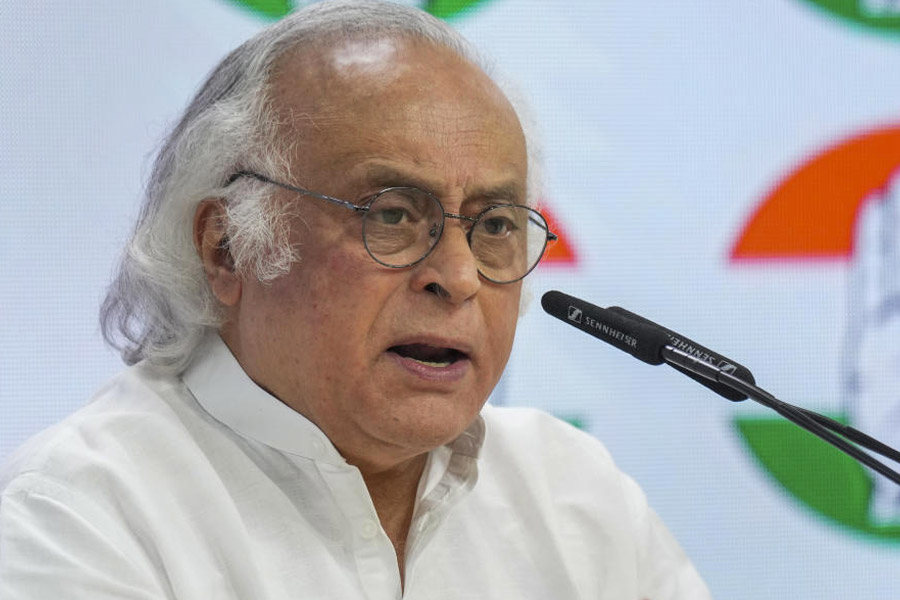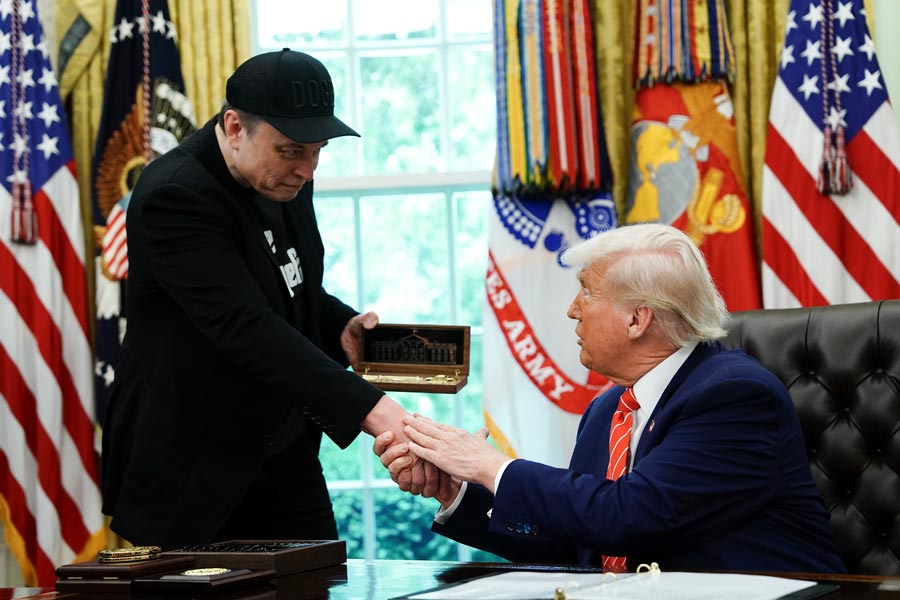London: The top three men’s players in the world tennis rankings — Rafael Nadal, Novak Djokovic and Roger Federer — each possesses a distinct style and, more surprisingly, a distinct racquet. “If you give Nadal’s racquet to Federer, I think he would struggle, and I think going the other way would be even a lot harder,” said Roman Prokes, one of the leading racquet customisers who has worked for the US Davis Cup team and many top players. “I really think Federer is one of those guys who can adjust the easiest to anything you give him, but Nadal’s game, if you gave him Federer’s racquet, I think it would not be pretty.”
Federer’s racquet is the heaviest of the three, a little more than 12 ounces, and it has the thinnest beam, the sharpest edges and the smallest head, which is a source of growing debate within the sport. Nadal’s racquet is the lightest and has the smallest grip, along with a wide, rounded throat designed with the aerodynamics of his whipping forehand in mind.
Djokovic’s racquet has the densest string pattern to suit his counterpunching, flatter-hitting style, and Djokovic also has his racquets strung the tightest.
“I think for professional-level players, Nadal’s racquet probably represents one end of a spectrum and maybe Roger’s is the other end, and I would say Novak’s racquet is sort of in the middle there somewhere,” said Cory Springer, the global business director for racquets at Wilson.
Wilson, whose long-running relationship with Federer dates to his junior days, makes Federer’s Six.One Tour BLX.
Babolat, a French company once known for its strings, not its racquets, makes Nadal’s Aeropro Drive GT.
Head lured Djokovic from Wilson with a major deal in 2009 and now makes his YouTek Speed MP. Such racquet switches often backfire, but Djokovic, after some early concerns, has clearly adjusted. His record in 2011 is 42-1.
“One thing’s for sure: if you went to my shop and pulled the Head off the rack, the Babolat off the rack and the Wilson off the rack, and then got a hold of those three guys’ actual racquets, they won’t feel like the three that just came off the rack,” said Brad Gilbert, a coach. “Those guys — their grips are molded to their hand, and the racquet is weighted and balanced, and it’s customised.”
Federer said he had lobbied to close the gap between the store model and the racquet he uses in competition. “I wanted Wilson to actually make it as close as possible,” he said.
But he and Djokovic, like many leading players, still hire a racquet-servicing outfit called Priority One, which adjusts their frames and handles their stringing needs. Nadal, generally considered the least particular of the three, often relies on the tournament staff to string his racquets and on Babolat’s technicians to prepare them.
But even with models that are not customised, the differences between the frames are clear. Last week, a small group of play testers of varying skill levels used racquets provided by the manufacturers that were strung relatively close to the players’ general specifications. Among the conclusions arrived at by consensus:
Nadal’s racquet seemed the easiest to generate topspin with from the baseline, but was more challenging to master on touch shots closer to the net.
Djokovic’s racquet felt quickest through the air, particularly on the serve.
Federer’s racquet seemed the least forgiving on off-centre hits but provided exceptional feel when contact was made with the sweet spot.
In the industry, Federer’s racquet is generally considered the most challenging to handle, above all for the recreational set.
“I have a tennis shop,” Gilbert said, “and I tell people all the time, we don’t even carry that stick anymore because it’s just not a good racquet for a club player. You’ve got to hit flush, I mean flush.”
Its 90-square-inch head is the smallest in use by a leading player. Nadal’s and Djokovic’s racquets have 100-square-inch heads. Federer, like Pete Sampras before him, has been hearing suggestions that he switch to a larger head to cut down on mis-hits.
“I’ve tried bigger,” Federer said. “The problem is we don’t have enough time to do racquet testing, you know? I’m always talking to Wilson about: ‘What else do you have? What else can we test?’ And who knows? Maybe down the road, I’ll change again.”
The other issue is psychological: Federer has won 16 Grand Slam singles titles and just reached the French Open final. “It’s also hard to change with all the success I’ve had with the racquet,” he said.
Federer and Djokovic use a blend of polyester strings and natural gut. They use gut in their main, vertical strings and polyester in their cross strings, the opposite of what most players do.










